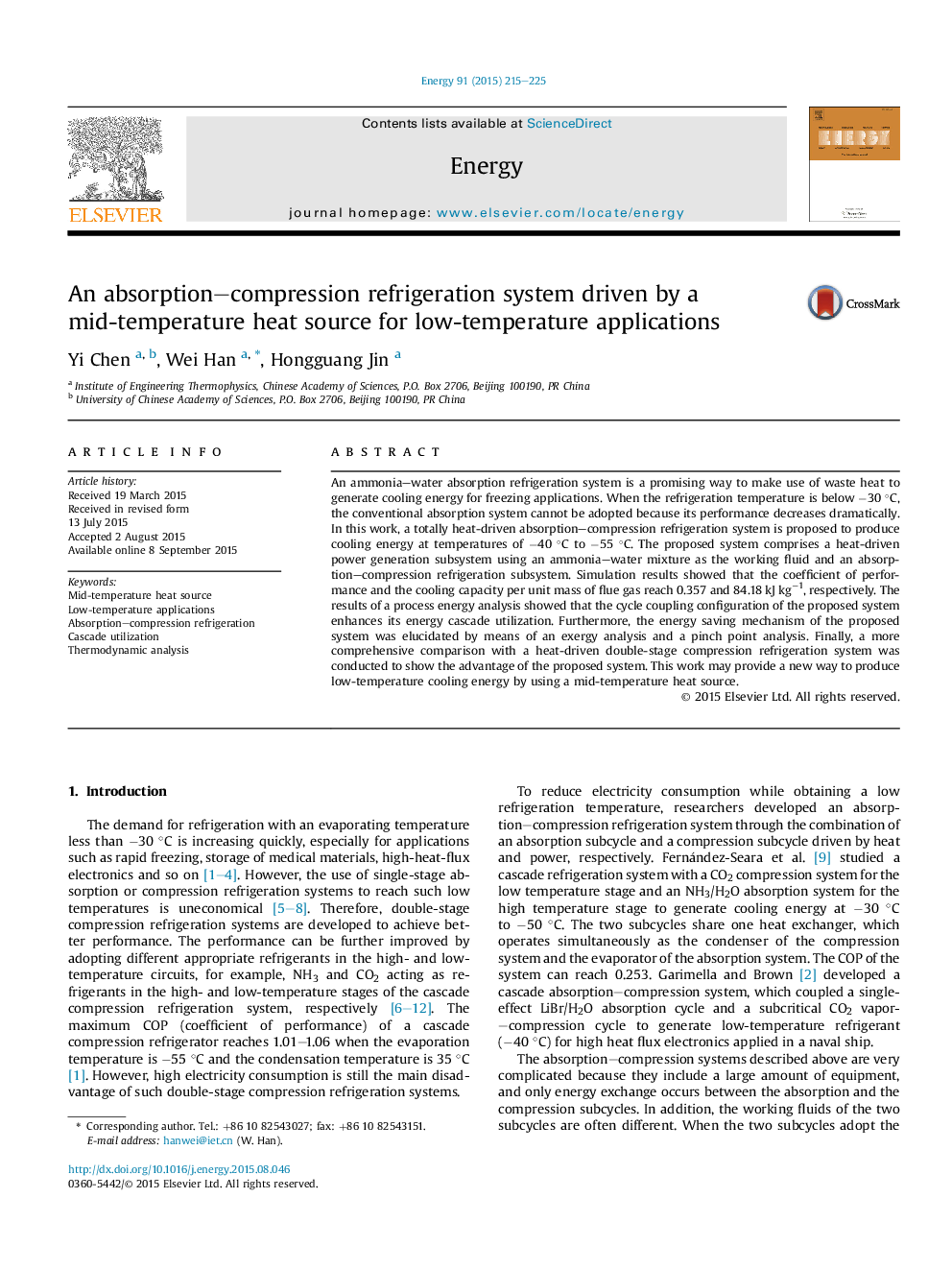| Article ID | Journal | Published Year | Pages | File Type |
|---|---|---|---|---|
| 1731486 | Energy | 2015 | 11 Pages |
Abstract
An ammonia-water absorption refrigeration system is a promising way to make use of waste heat to generate cooling energy for freezing applications. When the refrigeration temperature is below â30 °C, the conventional absorption system cannot be adopted because its performance decreases dramatically. In this work, a totally heat-driven absorption-compression refrigeration system is proposed to produce cooling energy at temperatures of â40 °C to â55 °C. The proposed system comprises a heat-driven power generation subsystem using an ammonia-water mixture as the working fluid and an absorption-compression refrigeration subsystem. Simulation results showed that the coefficient of performance and the cooling capacity per unit mass of flue gas reach 0.357 and 84.18 kJ kgâ1, respectively. The results of a process energy analysis showed that the cycle coupling configuration of the proposed system enhances its energy cascade utilization. Furthermore, the energy saving mechanism of the proposed system was elucidated by means of an exergy analysis and a pinch point analysis. Finally, a more comprehensive comparison with a heat-driven double-stage compression refrigeration system was conducted to show the advantage of the proposed system. This work may provide a new way to produce low-temperature cooling energy by using a mid-temperature heat source.
Related Topics
Physical Sciences and Engineering
Energy
Energy (General)
Authors
Yi Chen, Wei Han, Hongguang Jin,
